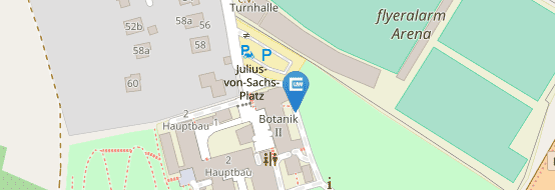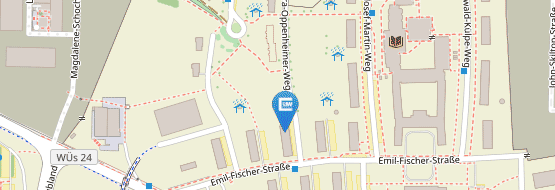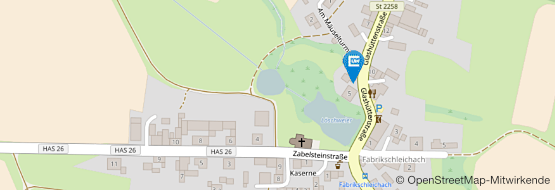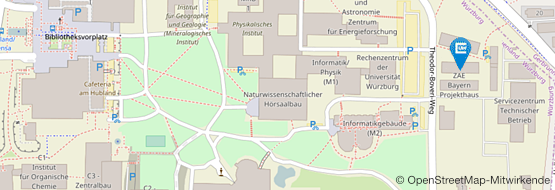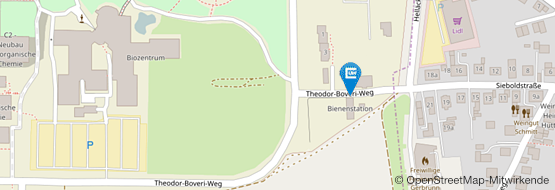Publikationen
Publikationen Dr. Ulrich Hildebrandt
- [ 2013 ]
- [ 2012 ]
- [ 2011 ]
- [ 2010 ]
- [ 2009 ]
- [ 2008 ]
- [ 2007 ]
- [ 2006 ]
- [ 2005 ]
- [ 2004 ]
- [ 2003 ]
- [ 2002 ]
- [ 2001 ]
- [ 1999 ]
- [ 1998 ]
2013[ to top ]
-
Distinct phyllosphere bacterial communities on Arabidopsis wax mutant leaves. . In PLoS ONE, 8(11), bl e78613. 2013.
2012[ to top ]
-
Abscisic acid mediates the formation of a suberized stem scar tissue in tomato fruits. . In New Phytologist, 194, bll 402–415. 2012.
-
Phyllosphere bacterial communities of trichome-bearing and trichomeless Arabidopsis thaliana leaves. . In Antonie van Leeuwenhoek, 101(3), bll 551–560. 2012.
-
Appressorium morphogenesis and cell cycle progression are linked in the grass powdery mildew fungus Blumeria graminis. . In Fungal Biology, 116, bll 890–901. 2012.
2011[ to top ]
-
The positional sterile (ps) mutation affects cuticular transpiration and wax biosynthesis of tomato fruits. . In J. Plant Physiol., 168(9), bll 871–877. 2011.
-
Wax matters: absence of very-long-chain aldehydes from the leaf cuticular wax of the glossy11 mutant of maize compromises the prepenetration processes of Blumeria graminis. . In Plant Pathology, 60, bll 1151–1161. 2011.
2010[ to top ]
-
Very-long-chain aldehydes promote in vitro prepenetration processes of Blumeria graminis in a dose- and chain length-dependent manner. . In New Phytologist, 188, bll 1039–1054. 2010.
2009[ to top ]
-
Biodiversity of arbuscular mycorrhizal fungi in roots and soils of two salt marshes. . In Environmental Microbiology, 11, bll 1548–1561. 2009.
-
Two sides of a leaf blade: Blumeria graminis needs chemical cues in cuticular waxes of Lolium perenne for germination and differentiation. . In Planta, 230, bll 95–105. 2009.
2008[ to top ]
-
Plant surface wax affects parasitoid’s response to host footprints. . In Naturwissenschaften, 95, bll 997–1002. 2008.
-
Host surface properties affect pre-penetration processes in the barley powdery mildew fungus. . In New Phytologist, 177, bll 251–263. 2008.
-
Interrelationships between Rhizobium etli G12 and Glomus intraradices and multitrophic effects in the biological control of the root-knot nematode Meloidogyne incognita on tomato. . In Journal of Plant Diseases and Plant Protection, 115, bll 108–113. 2008.
-
Drought, but not salinity determines the apparent effectiveness of halophytes colonized by arbuscular mycorrhizal fungi. . In J. Plant Physiol., 165, bll 1181–1192. 2008.
2007[ to top ]
-
EST-sequencing, in silico- and microarray based transcriptome profiling studies contribute to a molecular understanding of mycorrhizal symbioses. . In Phytochemistry, 68, bll 19–32. 2007.
-
The developmental pattern of tomato fruit wax accumulation and its impact on cuticular transpiration barrier properties: effects of a deficiency in a ß-ketoacyl-coenzyme A synthase (LeCER6). . In Plant Physiology, 144, bll 1667–1679. 2007.
-
Arbuscular mycorrhiza and heavy metal tolerance. . In Phytochemistry, 68, bll 139–146. 2007.
2006[ to top ]
-
The rare, endemic zinc violets of Central Europe originate from Viola lutea Huds. . In Plant Systematics and Evolution, 257, bll 205–222. 2006.
-
Analysis of expression of aquaporins and Na+/H+ transporters in tomato colonized by arbuscular mycorrhizal fungi and affected by salt stress. . In Environmental and Experimental Botany, 57, bll 177–186. Elsevier, 2006.
-
The bacterium Paenibacillus validus stimulates growth of the arbuscular mycorrhizal fungus Glomus intraradices up to the formation of fertile spores. . In FEMS Microbiol. Letters, 254, bll 258–267. 2006.
2005[ to top ]
-
Differential gene expressions in arbuscular mycorrhizal colonized tomato grown under heavy metal stress. . In J. Plant Physiol., 162, bll 634–649. 2005.
-
Regulation of AmtR-controlled gene expression in Corynebacterium glutamicum: mechanism and characterization of the AmtR regulon. . In Mol. Microbiol., 58(2), bll 580–595. 2005.
2004[ to top ]
-
Element distribution in mycorrhizal and non-mycorrhizal roots of the halophyte Aster tripolium determined by proton induced X-ray emission (PIXE). . In Protoplasma, 223, bll 183–189. 2004.
2003[ to top ]
-
Colonisation of pennycresses (Thlaspi sp.) of the Brassicaceae by arbuscular mycorrhizal fungi. . In J. Plant Physiol., 160, bll 615–626. 2003.
2002[ to top ]
-
Towards growth of arbuscular mycorrhizal fungi independently of a host plant. . In Appl. Environ. Microbiol., 68, bll 1919–1924. 2002.
-
The arbuscular mycorrhizal fungus Glomus geosporum in European saline, sodic and gypsum soils. . In Mycorrhiza, 12, bll 199–211. 2002.
-
Expression of nitrate transporter genes in tomato colonized by an arbuscular mycorrhizal fungus. . In Physiologia Plantarum, 114, bll 125–136. 2002.
2001[ to top ]
-
Arbuscular mycorrhizal colonization of halophytes in Central European salt marshes. . In Mycorrhiza, 10, bll 175–183. 2001.
-
The colonization of plants from Central European heavy metal soils and salt marshes by arbuscular mycorrhizal fungi. . In Minerva Biotec, 13, bll 65–67. 2001.
-
Suppression of an elicitor-induced oxidative burst reaction in Nicotiana tabacum and Medicago sativa cell cultures by corticrocin but not by mycorradicin. . In Mycorrhiza, 11, bll 101–106. 2001.
1999[ to top ]
-
The zinc violet and its colonization by arbuscular mycorrhizal fungi. . In J. Plant. Physiol., 154, bll 709–717. 1999.
-
Selective element deposits in maize colonized by a heavy metal tolerance conferring arbuscular mycorrhizal fungus. . In J. Plant Physiol., 154, bll 709–717. 1999.
1998[ to top ]
-
Chemical and biological characterization of corticrocin, a yellow pigment formed by the ectomycorrhizal fungus Piloderma croceum. . In Z. Naturforsch., 53c, bll 4–8. 1998.



